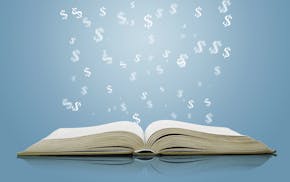Taxes done? Then it's time to get a start on the next tax year. I know you'd probably like to hit me with a rolled-up 1040 for saying as much, but think of it this way: Your tax situation -- and the pain of tax filing -- will never be fresher in your mind than it is right now.
The tax pros say the first step to a pain-free tax season is organization. Ditch the shoebox stuffed with receipts. "With the shoebox there's too much of a tendency to put stuff in there that's not relevant, and then at the end of the year people are stressed because it's such a mess," said Minneapolis accountant Mark Bakko. To figure out what you'll need to file next year, take a look at the tax paperwork you just organized, or Google "income tax checklist" to turn up a cheat sheet of paperwork to keep.
Then grab file folders, and separate documents in a way that makes sense to you. For example, you might create folders for charitable receipts, income, financial statements, and other expenses such as child care and education.
Drowning in paperwork? Save a tree and go with online statements, suggests Duluth accountant Craig Chilcote. "At year end, putting together tax information will be as easy as downloading a couple of statements," he said.
An additional tip is to organize how you make charitable contributions or pay for business expenses. If you're like me, and make most donations via credit card, why not designate one card for financial contributions? If you have a business, why not be more diligent about using a debit or credit card dedicated to business expenses? Kay Kramer, an Edina certified financial planner, says being methodical about how you pay for tax-relevant items throughout the year eliminates the need to scour several credit card statements come April.
Many cards also offer year-end statements that organize spending into helpful categories. Another way to keep track of such expenses is to tag a transaction with the label "tax" in your online bank account, or when using a budgeting site such as mint.com.
Aside from organizational challenges, tax pros say it pains clients to write that big check to the IRS. To lessen the odds of receiving an unexpected, ugly bill, take the time to calculate the proper tax withholding from your paycheck at www.IRS.gov. Do this before filing your 2010 taxes away; you'll need data from the return you just filled out.
If you're self-employed, figure out your estimated payments now and set aside money to pay them. Estimated tax payments are typically required if you expect to owe at least $1,000 in taxes. Visit IRS.gov and search "estimated tax" for instructions on how to figure out how much you need to pay.
If you're expecting major family changes, or a shift in expenses and income, do a tax projection. Most software programs offer this capability, and accountants will do them for clients. Edina certified financial planner Shannon King said he's "astounded" by how many people say they want to factor in taxes when making financial decisions but won't run the numbers. "This is like saying you would like to go to Florida, but you aren't willing to drive or fly there," he said.
Instead of gasping at your tax bill come April, think about how to lower your taxes now. Retirement contributions to 401(k)s and other tax-deferred plans reduce your tax bill today, reminds Minneapolis tax accountant Kullen Birkeland. Don't put off the decision to start saving or to save more, since you'll be less likely to miss small sums regularly taken out of your paycheck, and 2011 is nearly one-third over.
Tax preparers say clients often leave money on the table by taking too small a deduction for non-cash charitable contributions because they neglect to accurately track the goods they've given away.
Vow to use Intuit's It's Deductible or H&R Block's DeductionPro -- two free programs that value and track your non-cash charitable contributions online. Or for $2.99, you can download iDonatedIt, an iPhone app developed by accountants.
Then there are taxpayers like me, who make tax filing harder by meticulously tracking tax preparation fees, union dues and job expenses, even though they never add up to enough to shave dollars off my tax bill. Miscellaneous expenses must exceed 2 percent of your adjusted gross income to count. Medical expenses must exceed 7.5 percent of your adjusted gross income. If you multiply that income figure by 7.5 percent and there's no way you'll spend that much on doctor's visits or prescriptions, then you're wasting your time tracking it, Bakko explained. "It's tough for most people to get there."
Finally, get to know the tax code. Tough order, I know, because the tax code is a) boring b) ridiculously complex and c) always changing. But it's worth your while to be at least somewhat familiar with available credits and deductions because they can shave dollars off of major expenses you would probably make anyway.
College tuition, day care costs, energy-efficient home improvements, taking out a mortgage and purchasing long-term care insurance are some examples of major expenses with tax breaks. Just remember: While tax breaks can offset the costs of these expenses, there's no guarantee they'll be here for good.
Kara McGuire • 612-673-7293 or kmcguire@startribune.com. Follow her on Twitter: @kablog.



